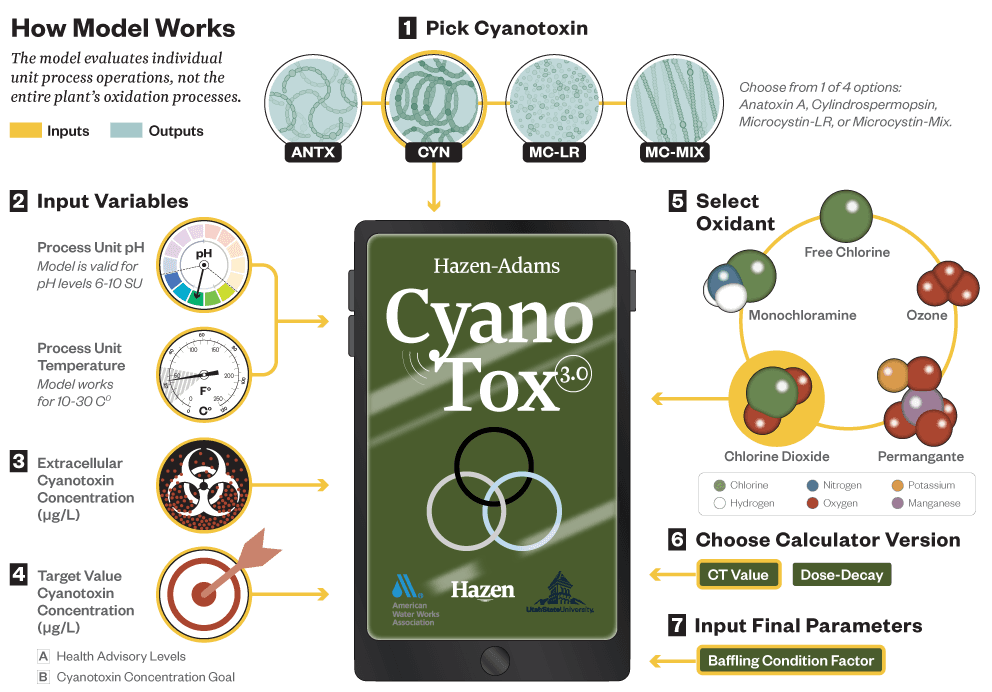A Digital Twin Model for Cyanotoxin Removal at Drinking Water Plants
In 2015, the US EPA issued health advisories for the cyanotoxins cylindrospermopsin and microcystin, compounds that are produced by naturally occurring cyanobacteria (blue-green algae) and have negative health impacts on humans and animals. That same year, the Hazen-Adams CyanoTOX Tool was developed and published by AWWA and the Water Research Foundation to help utilities evaluate how various oxidants could be used to manage extracellular cyanotoxins.
Related Topics:

The model is not intended to be a simultaneous compliance tool to manage cyanotoxins along with other compliance targets (i.e., DBPs, lead and copper, disinfection). However, it will allow a utility to conduct exercises on various scenarios of cyanobacteria bloom events and see how the plant performs with respect to health advisory targets or other targets set by the utility.
The original model and its follow up (v.2.0) could not account for cell lysing (when the cell bursts open, releasing all its intracellular contents) and cell leaking (when the cell slowly leaks its intracellular contents). CyanoTOX v3.0, released this year, has been expanded to include oxidation, cell damage, leaking, and lysing with the ability to model the entire drinking water treatment plant as a “digital twin.” The tool provides water utilities with a means to assess how changes in their existing treatment scheme—from hydraulics, to disinfection, to activated carbon—and standard filtration will influence the degradation and removal of specific cyanotoxins or groups of cyanotoxins.

Based on input data, the model produces several graphs illustrating cyanotoxin removal and concentration over time. The tool is free and downloadable from AWWA and the Water Research Foundation.
The CyanoTOX v3.0 model provides utilities with a unique tool that can guide future planning and help inform how future treatment changes could impact flexibility and responses to cyanotoxin events. As a digital twin, utilities can now examine the coordinated impact of various treatment decisions on the removal of cyanobacteria cells and cyanotoxins in both the intracellular and extracellular forms.
The model can be used during a bloom event; however, the extraordinary power of this tool is to use it as a digital twin ahead of time as a way to model scenarios, set trigger levels, and develop action plans before a bloom event ever occurs.
The tool is available for free on the AWWA website.











